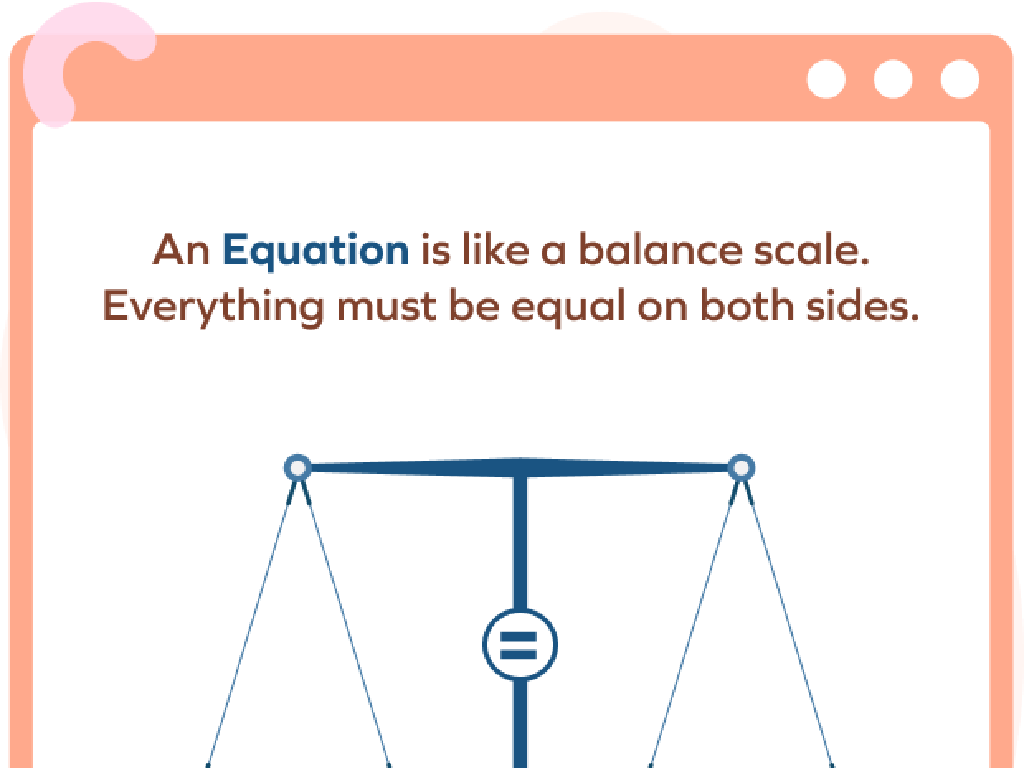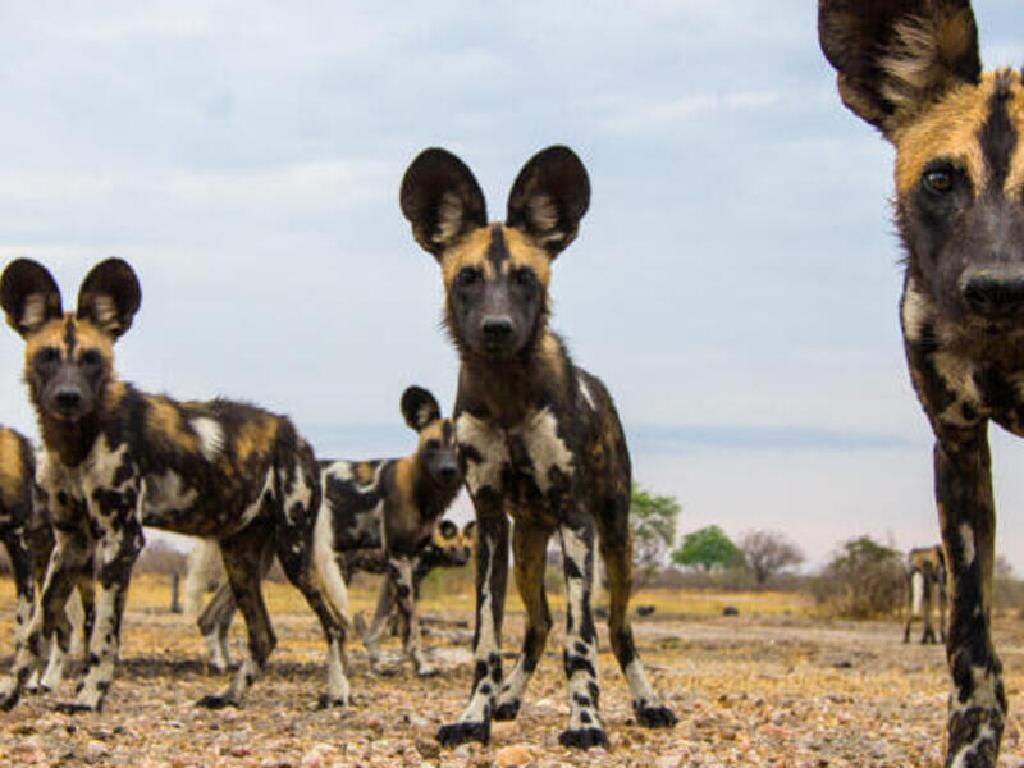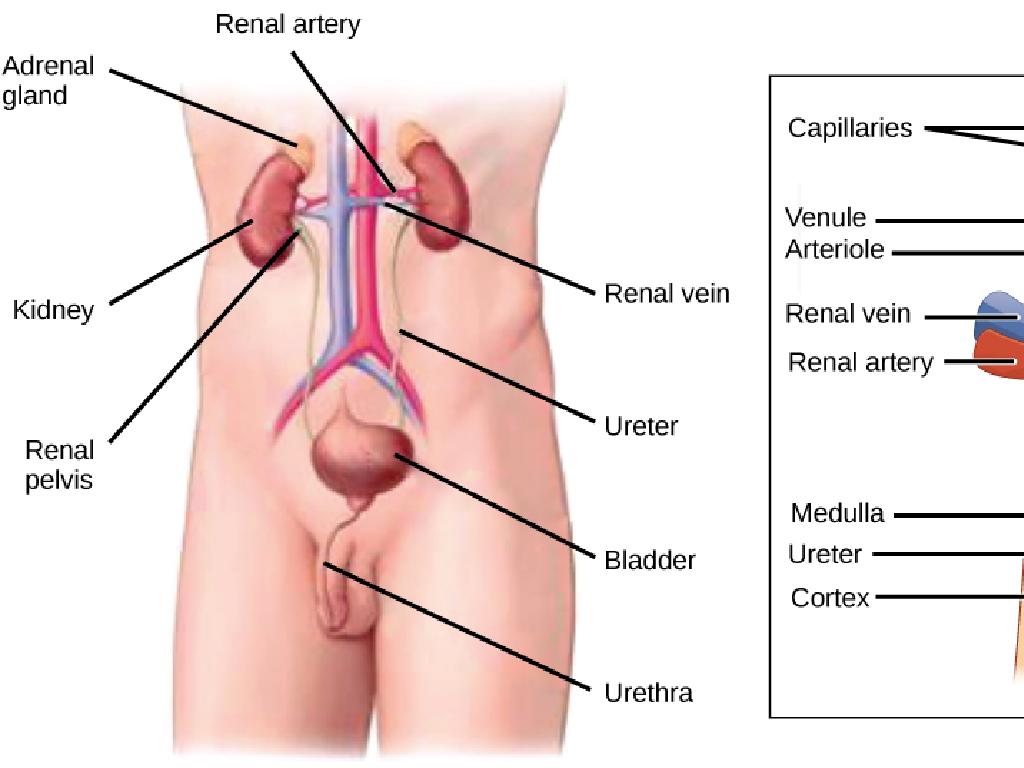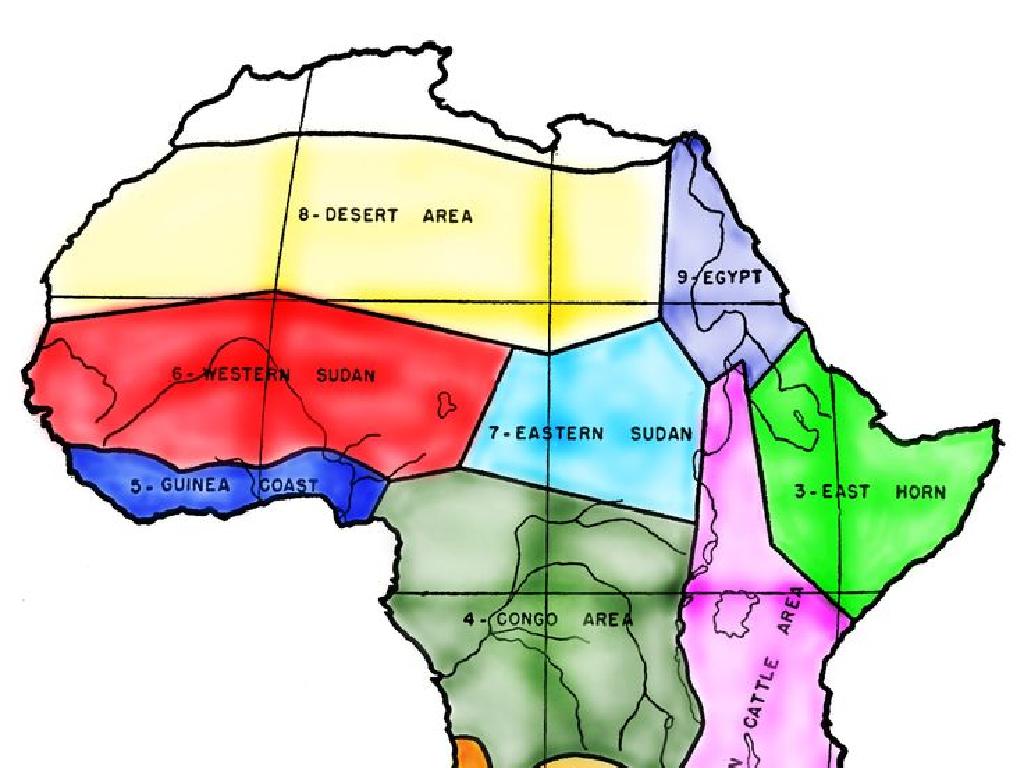Identify Independent And Dependent Variables
Subject: Science
Grade: Eighth grade
Topic: Designing Experiments
Please LOG IN to download the presentation. Access is available to registered users only.
View More Content
Experiment Design: Variables in Focus
– Grasp the Scientific Method
– A series of steps for scientific inquiry
– Comprehend what experiments are
– Tests conducted to prove or disprove a hypothesis
– Learn about Independent Variables
– The variable you change to see effects
– Discover Dependent Variables
– The variable observed, changes in response to the independent
|
This slide introduces students to the foundational concepts of designing experiments within the scientific method framework. Begin by explaining the steps of the Scientific Method, emphasizing its importance in conducting organized and reliable research. Clarify what experiments are, highlighting that they are structured tests to investigate hypotheses. Then, focus on explaining independent variables as the factors that scientists change or manipulate in an experiment, and dependent variables as the observed effects of those changes. Use relatable examples to illustrate these concepts, such as changing the amount of sunlight (independent variable) to see the effect on plant growth (dependent variable). This will set the stage for students to understand how to identify and use these variables in their own experiments.
Understanding Variables in Experiments
– Define a scientific variable
– A variable is something that can change or vary in an experiment.
– Explore types of variables
– Independent variables are changed by the scientist; dependent variables are what is being measured.
– Variables in daily life
– For example, in baking, the oven temperature can be an independent variable, while the doneness of the cake is the dependent variable.
– Independent vs. dependent
– Understanding these helps in predicting outcomes and establishing cause-effect relationships in experiments.
|
This slide introduces the concept of variables within the context of scientific experiments. A variable is any factor, trait, or condition that can exist in differing amounts or types. The slide should explain the difference between independent and dependent variables, with the independent variable being the one that is changed or controlled to test its effects on the dependent variable. Provide everyday examples to make the concept relatable, such as how changing the temperature when baking affects how well a cake bakes. Emphasize the importance of variables in the scientific method and how they are crucial for designing fair and reliable experiments. Encourage students to think of their own examples of variables in everyday situations.
Understanding Independent Variables
– Define independent variable
– It’s the condition you change in an experiment.
– How to identify it
– Look for what the experimenter alters.
– Role in experiments
– It influences the outcome of the experiment.
– Examples in scientific studies
– Plant growth at different sunlight levels.
|
This slide aims to clarify the concept of independent variables within the context of scientific experiments. An independent variable is the one that is changed or controlled by the scientist to test its effects on the dependent variable. To identify an independent variable, students should look for what the experimenter is purposely changing in the setup. Its role is crucial as it directly affects the dependent variable, helping to test hypotheses. For example, in a study on plant growth, the independent variable could be the amount of sunlight each plant receives. The dependent variable would be the growth of the plants, which is measured to see how it changes in response to the different levels of sunlight. Encourage students to think of their own examples and understand how changing different independent variables can affect the outcome of an experiment.
Understanding Dependent Variables
– Define a dependent variable
– It’s the outcome we measure in an experiment
– How to identify it
– Look for what’s being tested or affected
– Relationship with independent variables
– Dependent changes in response to the independent
– Examples in experiments
– Plant growth measured against different sunlight levels
|
This slide aims to clarify the concept of dependent variables within the context of scientific experiments. A dependent variable is what researchers measure to see if it changes as a result of different conditions set by the independent variable. To identify a dependent variable, students should ask what the experiment’s outcome is or what effect is being observed. It’s crucial to understand that the dependent variable is contingent on the independent variable; it’s the effect of the cause. For example, when examining how different amounts of sunlight affect plant growth, the growth of the plant is the dependent variable. Encourage students to think of their own examples and consider what variables they could measure in an experiment.
Understanding Controlled Variables
– Define Controlled Variables
– Factors kept constant to not affect outcome
– Significance in experiments
– Ensures reliability by isolating variables
– Examples in scientific studies
– Watering plants with same amount ensures fair test
– Impact on experiment validity
– Consistent conditions lead to trustworthy results
|
This slide aims to clarify the concept of controlled variables, which are essential in any scientific experiment. Controlled variables are the elements that are kept constant throughout an experiment to ensure that the results are due to the independent variable and not some other factor. Emphasize the importance of controlling variables to maintain the integrity of the experiment and to draw valid conclusions. Provide examples such as using the same amount of water for all plants in a growth experiment to ensure that differences in growth are due to the variable being tested (e.g., type of fertilizer) and not water quantity. Discuss how failing to control variables can lead to invalid results and confusion about what is truly affecting the outcome of the experiment.
Designing an Experiment: Variables & Hypothesis
– Outline steps to design an experiment
– Learn to identify variables
– Variables are elements that can change in an experiment
– Understand independent variables
– Independent variables are changed by the scientist
– Comprehend dependent variables
– Dependent variables are affected by the changes
|
This slide introduces students to the foundational steps of designing a scientific experiment, with a focus on understanding variables and formulating a hypothesis. Start by discussing the systematic steps required to design an experiment, emphasizing the importance of a structured approach. Explain variables as the different factors that can change and affect the experiment’s outcome. Highlight the difference between independent variables (which are changed to observe effects) and dependent variables (which are measured to see the impact of changes). Encourage students to think of their own examples of independent and dependent variables in everyday situations to solidify their understanding. Conclude with the concept of a hypothesis, which is an educated guess about the relationship between the independent and dependent variables.
Experiment Variables: Plant Growth
– Example: Plant Growth Experiment
– Observe how different sunlight amounts affect growth
– Independent vs. Dependent Variables
– Independent: Sunlight amount, Dependent: Growth rate
– Identifying Controlled Variables
– Controlled: Soil type, water, pot size, plant species
– Significance in Experiments
– Understanding variables ensures fair testing and reliable results
|
This slide introduces students to the concept of variables within the context of a plant growth experiment. The independent variable is the amount of sunlight, which is changed intentionally to observe its effect on the dependent variable, the rate of plant growth. Controlled variables such as soil type, water amount, pot size, and plant species must be kept constant to ensure that the experiment is fair and the results are due to the independent variable only. Emphasize the importance of identifying and controlling variables to maintain the integrity of an experiment’s results. Encourage students to think of other examples where variables play a crucial role in an experiment’s outcome.
Class Activity: Design Your Experiment
– Create a simple experiment plan
– Identify variables: independent, dependent, controlled
– Independent: what you change, Dependent: what you measure, Controlled: what you keep the same
– Share your experiment ideas
– Explain your plan and reasoning behind variable choices
– Discuss and provide feedback
– Engage with peers to refine your experiment
|
This activity is aimed at helping students understand the concept of variables in an experiment. They will create their own simple experiment plan, identifying the independent variable (the one they change), the dependent variable (the one they measure), and controlled variables (the ones they keep constant to ensure a fair test). After planning, students will share their ideas with the class, explaining their reasoning for choosing their variables. Encourage students to listen to each other’s plans and provide constructive feedback. This will not only help them grasp the concepts better but also improve their communication and critical thinking skills. Possible experiments could include growing plants with different amounts of water, testing the effect of exercise on heart rate, or observing the melting rate of ice with different amounts of salt.
Conclusion: Variables in Experiments
– Recap: Independent vs. Dependent Variables
– Independent variables are changed or controlled, while dependent variables are observed and measured.
– Significance of Variable Identification
– Correctly identifying variables ensures accurate experiment design and results interpretation.
– Q&A Session
– Encourage Curiosity and Clarification
– A chance to ask questions or express confusion about today’s lesson.
|
As we conclude today’s lesson, it’s crucial to reinforce the concepts of independent and dependent variables. Understanding these concepts is the foundation of designing any scientific experiment. Emphasize the importance of correctly identifying variables as it directly impacts the validity of an experiment’s outcome. Open the floor for a Q&A session, encouraging students to ask questions or seek clarification on any aspect of the lesson. This is an opportunity to address any uncertainties and ensure that students are comfortable with the material. Encourage students to think critically about the role of variables in experiments they encounter in their daily lives.






